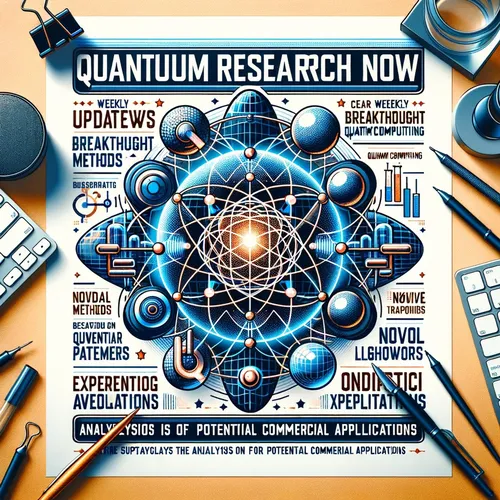Quantum Titans Collide: IBM-AMD Pact Ignites Hybrid Computing Revolution
- Author
- Quiet. Please
- Published
- Fri 29 Aug 2025
- Episode Link
- https://www.spreaker.com/episode/quantum-titans-collide-ibm-amd-pact-ignites-hybrid-computing-revolution--67553832
This is your Quantum Research Now podcast.
Today’s quantum headlines feel like a collision of destiny and discovery. But make no mistake—a true seismic shift hit just hours ago: IBM and AMD jointly announced their alliance to build hybrid quantum–classical supercomputing architectures. This isn’t incremental. It’s the dawn of an entirely new computational era.
I’m Leo, your Learning Enhanced Operator—a quantum computing specialist, obsessed with the deep symmetry of quantum mechanics and its wild potential to change the world. I spend most days surrounded by the chilly hum of quantum processors, the blinking lights of dilution fridges, and the thrilling uncertainty that only quantum physics can give. Let me guide you through what this IBM-AMD quantum pact really means—using both technical insight and the drama this moment demands.
Here’s what’s at stake: IBM brings its quantum hardware, renowned for leading advancements in superconducting qubits and error mitigation. AMD, meanwhile, is a household name in classical high-performance computing—think the brains behind supercomputers crunching genomics data, weather models, or simulating planetary atmospheres. Now, imagine blending the strengths of both. It’s as if you’re harnessing the flexibility of a painter with the precision of a sculptor: quantum computers for what they do best—exploring countless solutions simultaneously—and classical computers for organized, methodical problem-solving.
Arvind Krishna at IBM described this as “pushing past the limits of traditional computing,” while AMD’s Lisa Su spoke of “tremendous opportunities to accelerate discovery.” What does that look like in practice? Picture a relay race: traditional computers sprint through routine calculations, then hand the quantum baton to tackle the puzzles that even the fastest CPUs find impossible—like untangling complex molecules, optimizing logistics for national grids, or inventing brand-new materials from first principles.
Just this past week, a collaborators’ victory lap happened in my own lab: researchers managed to entangle vibrations within a single atom, using the Gottesman-Kitaev-Preskill code—the so-called “Rosetta Stone” of quantum error correction. It’s like reducing a symphony orchestra into a single virtuoso performer, massively cutting the hardware needed to scale up quantum machines. Technical precision, dramatic efficiency.
And don’t miss the wider context: Cleveland Clinic expanded access to IBM Quantum for healthcare startups, while Europe just launched a cloud service on trapped-ion quantum machines. These ripples signal that quantum is not just for physicists; it’s bridging into medicine, logistics, and beyond.
What happens next? With giants like IBM and AMD joining forces, the answer is: the unimaginable becomes thinkable. This hybrid model hints at a world where solving big challenges—from climate to cryptography—feels more like orchestrating a quantum symphony than grinding through equations.
I’m Leo. Thanks for sharing these entangled moments on Quantum Research Now. Got burning questions, wild ideas, or topics you want me to untangle? Drop me a line at [email protected]. Don’t forget to subscribe to Quantum Research Now—this has been a Quiet Please production. For more information, check out quietplease.ai. Until next time, stay curious.
For more http://www.quietplease.ai
Get the best deals https://amzn.to/3ODvOta
